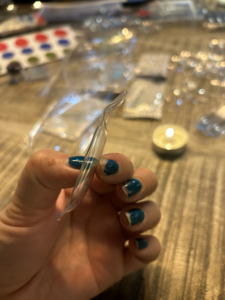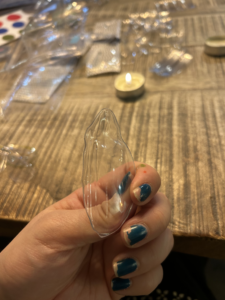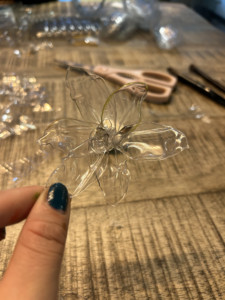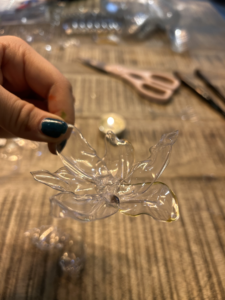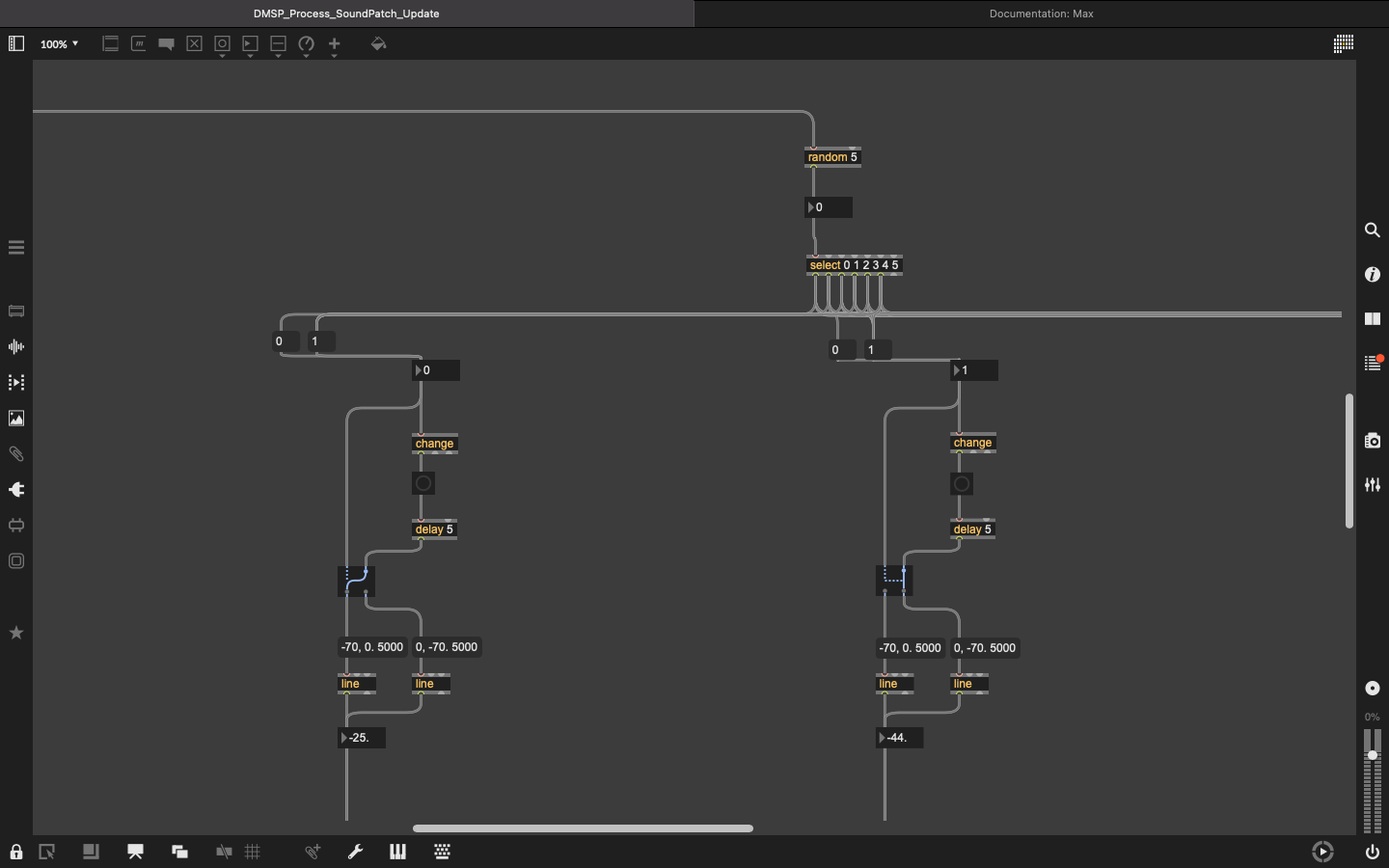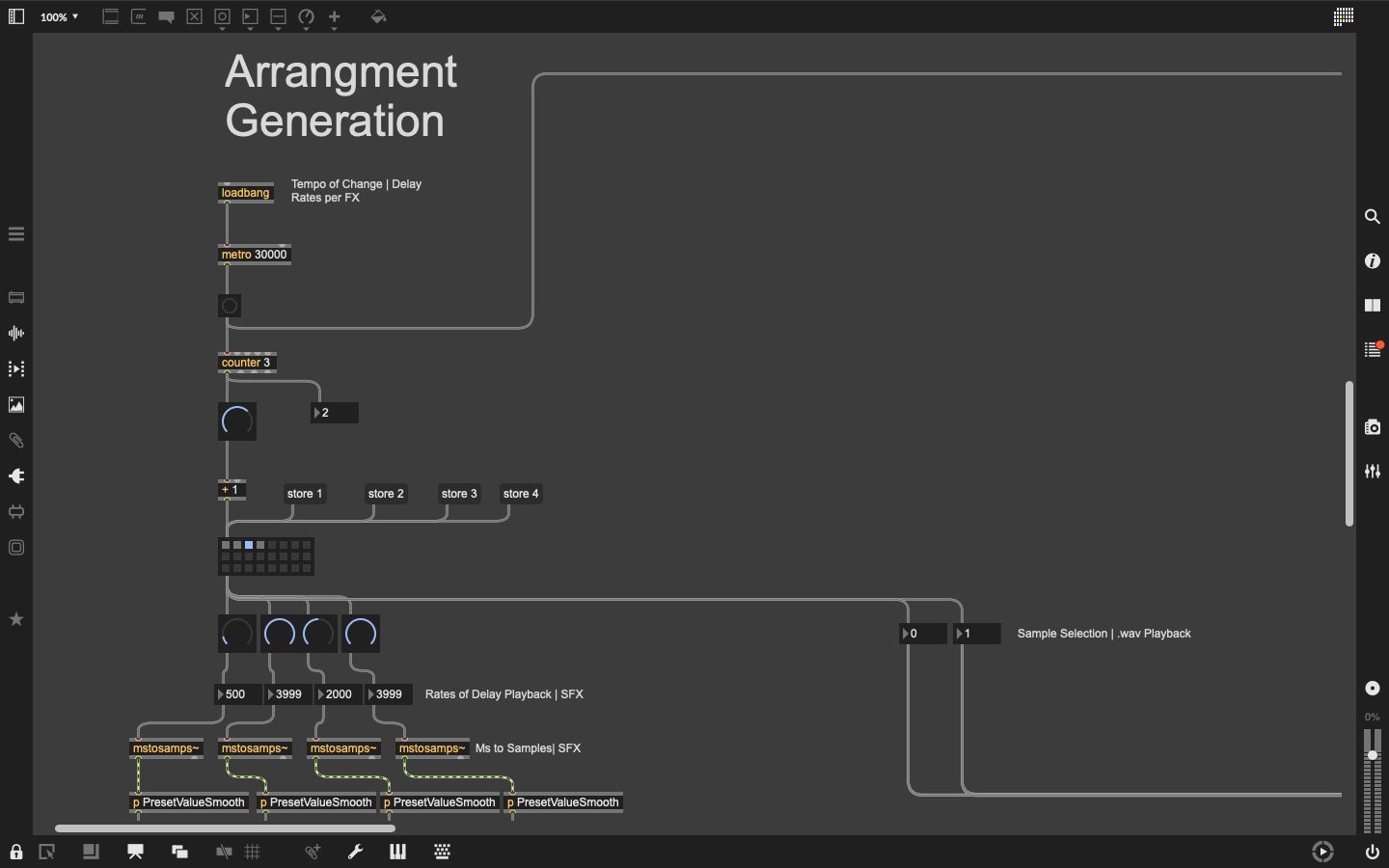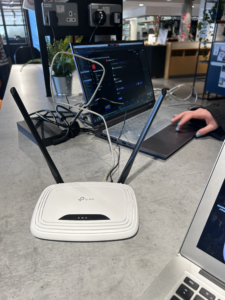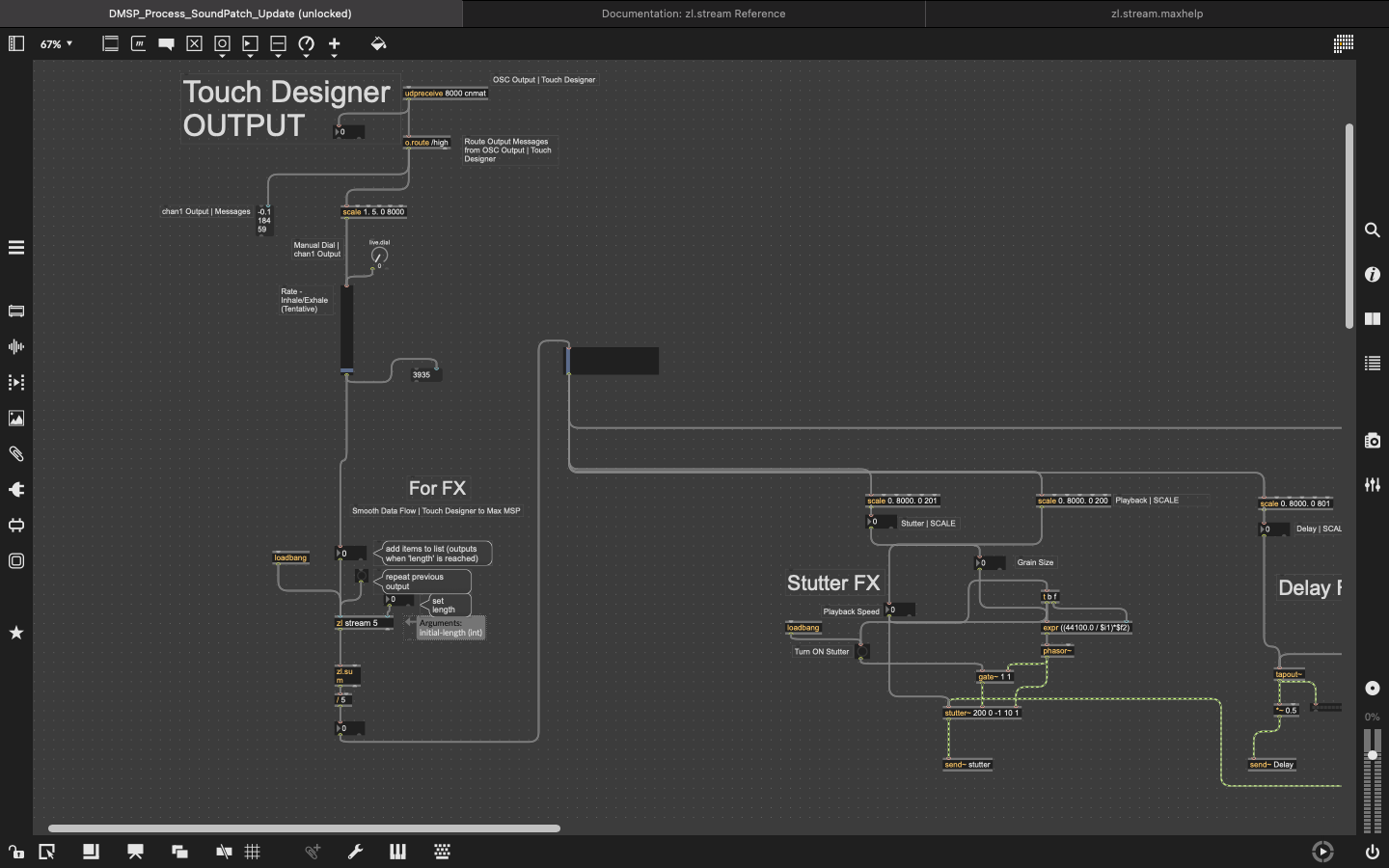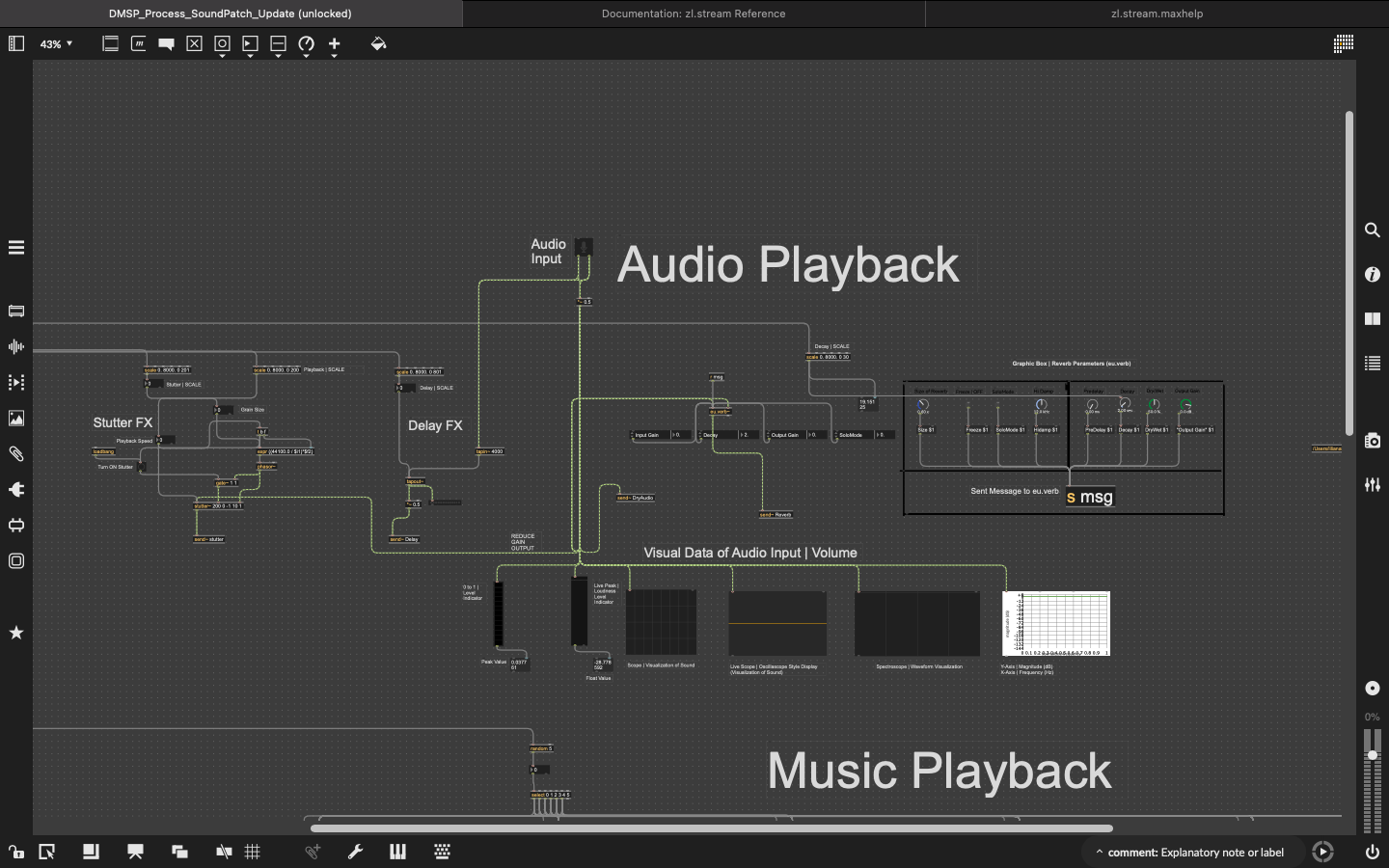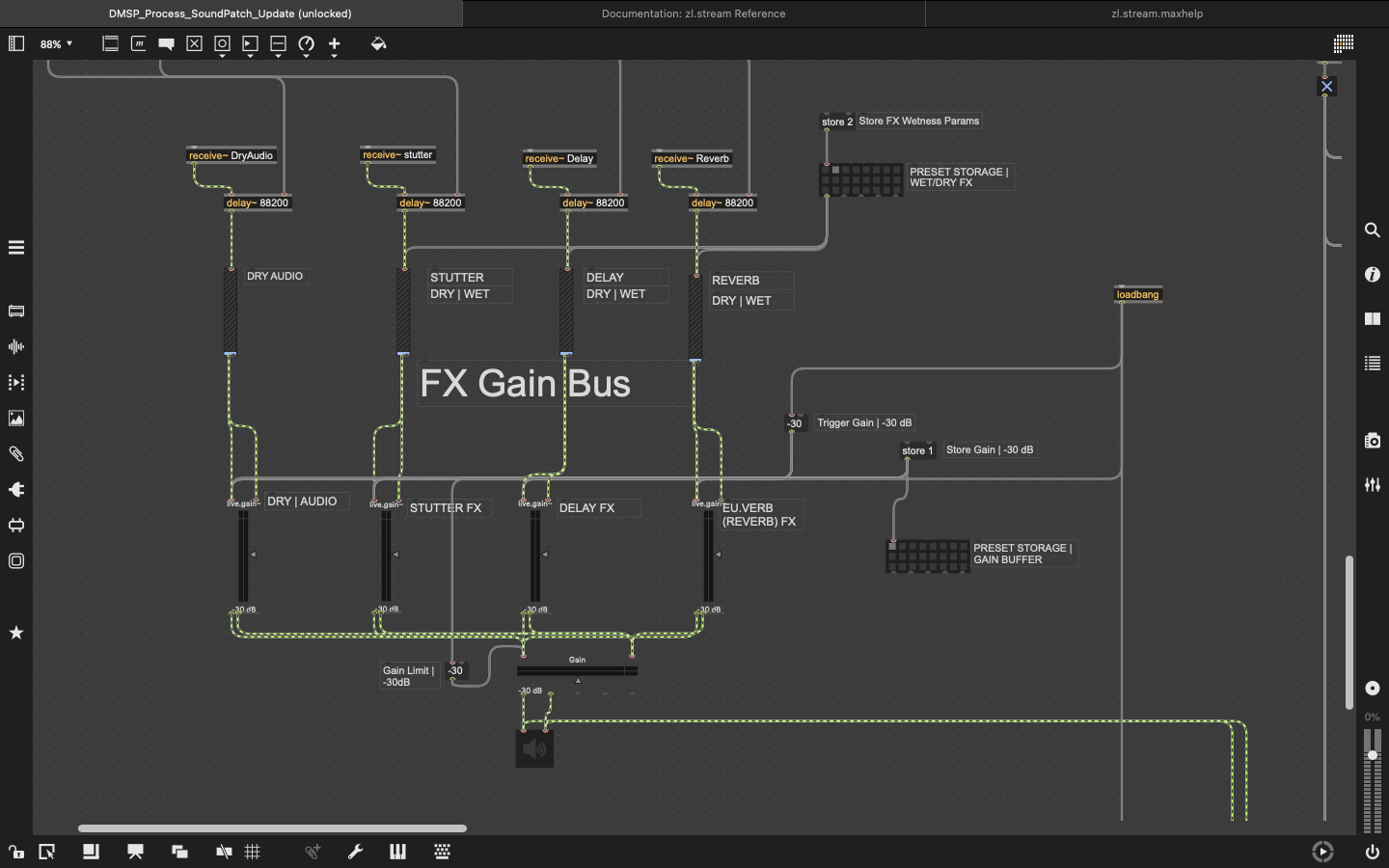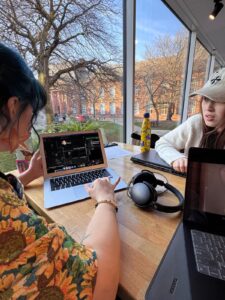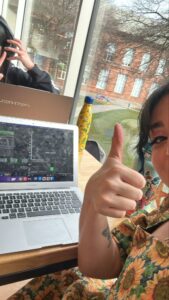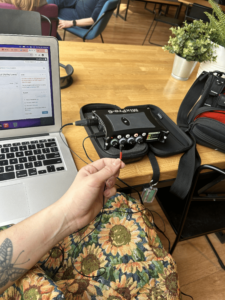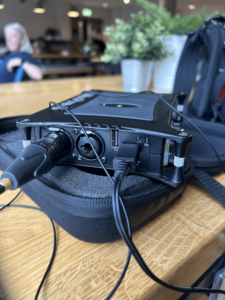Dates of Development | April 18-20th, 2025
Sound Design Director | Max MSP: Ashley Loera
Sound Design | Final Prototype
Software:
- Max MSP Software
Hardware:
- MacBook Air Laptop
Final Progress Notes:
During the Installation, we were given feedback regarding improvements to the interactive, sound design and visual aspects of our installation. The following have been acknowledged in the final Sound Design MaxMSP prototype:
- Clipping occurring from the meditation music during the installation: improved by designing fades into the audio samples, for smooth transitions.
- Static Arrangement: Improved with the addition of a Synthesis Patch.
- Inconsistency in Audio Input playback: Removed the audio playback of the audio input and replaced it with an audio sample of breath that is controlled by the audio input. This helped give the illusion of breathing, by maintaining sample clarity and consistency
Below is the final prototype of the Sound Design Max Patch showing the improvements.
Approach:
- Arrangement | Reduce Clipping
- To improve clipping in the arrangement, I first mixed fades into the Arrangement Samples using my DAW – Ableton live 11. Total Samples with Fades: 6.
- I added programmed fades into the MaxMSP patch similar to the fades developed for the main 6 audio samples. This created a fader buffer that assisted in fading the divided samples to reduce clipping.
- Arrangement | Static Progression
- To develop movement in the arrangement, I received support and assistance from our Tutor, Philly, to develop a simplistic synthesizer.
- I further developed the Synthesizer to trigger 4 sets of frequencies via a preset chain.
- Audio Input Playback | Audio Sampling
- As shown above, to create a consistency in audio output, I removed the audio playback of the audio input entirely.
- I inserted an Inhale-Exhale breath sample, from youtube, into the patch and copied the sample splicer patch from the arrangement section. I then connected the TD Output Data Level Meter to a Knob and updated the range from 0,8000 to 0,1. When TD output data begins to play, it turns the audio sample playback on, which is then designed by the sound effects.
Reflection:
- After spending some time working on the suggestions, I do agree that they assisted in asserting clarity, smoothness and movement to the Sound Design portion of the installation.
- I do believe that the synthesis patch can benefit from further improvements to the waveform shape (sine, triangle, etc.), and design with the use of LFOs, and effects including: Distortion, Phasor, Flanger, Compression, and Chorus, etc. Another option would be to connect a Synthesis Plugin, like Serum 2.
- Overall, from the sound design standpoint, I am very excited for the work we are presenting and I am sincerely grateful for the feedback. This has helped me develop my technique and creative direction.
Bibliography
Sounds, Daily. “ Inhale and Exhale Breathing Sound Effect *Copyright FREE*.” YouTube, YouTube, 2 Feb. 2021, www.youtube.com/watch?v=KRTmeWf89lM.


